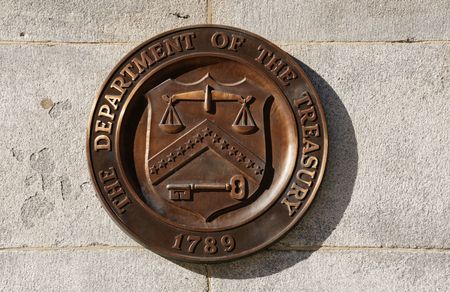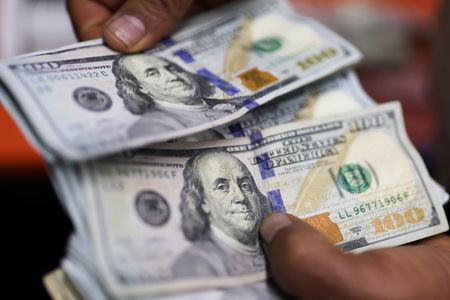(Reuters) -U.S. President Donald Trump announced on Saturday a 30% tariff rate for goods imported from the European Union and Mexico, starting on August 1.
The EU had initially hoped to reach a comprehensive trade agreement with the U.S. for 27-country bloc, but until Trump’s social media post on Saturday it was unclear if it might get a letter announcing more tariffs or when an agreement might be finalized.
Earlier this week, Trump issued new tariff announcements for a number of countries, including Japan, South Korea, Canada and Brazil, as well as a 50% tariff on copper.
COMMENTS:
MICHAEL BROWN, SENIOR MARKET STRATEGIST, PEPPERSTONE, LONDON:
“There are still three weeks until August, 1 which is a lifetime in this sort of situation. Again, I think it’s all part of this ‘escalate to de-escalate’ strategy in terms of trying to bring people to the table and get some more concessions out of them.
In terms of the EU one specifically, I guess you could argue that the threat (from Trump) the other day was 50%.”
“The risk is whether the EU, because all of the reporting has been around the U.S.-EU deal is close, take this poorly and actually go: ‘OK, fine, well, we’re just going to throw in place some countermeasures’ and then things start to escalate once more, which I think really then starts to change the calculus away from, this is just a negotiating gambit and back towards Liberation Day.”
“Depending on what happens in the next 24 hours or so, I imagine that the knee-jerk move is euro-negative, eurozone asset-negative. And then, as calmer heads prevail, it comes back to the fact that, is it just a negotiating gambit?
“Certainly, I think that the initial reaction will be a case of, actually, this is pretty devastating if it does come into effect and we need to price, not necessarily the full probability of it coming into effect, but at least there needs to be a chance, discounted that an export-led economy to its main market has got a 30% tariff on it, and it’s just not going to be able to cope with that.”
KARL SCHAMOTTA, CHIEF MARKET STRATEGIST, CORPAY, TORONTO:
“Traders spent much of the last week hedging against a broadening in the president’s tariff schedule, but at 30%, today’s action has likely topped expectations.
“Although rising tariffs remain a bigger threat to the US itself, it is fair to expect the euro and Mexican peso to come under renewed selling pressure at tomorrow’s Asia open.
“At some point soon, it will become clear that Trump’s protectionist agenda has not been appropriately discounted in currencies, in asset prices, or in measures of volatility. A moment of capitulation is coming, in financial markets, or in the White House itself.”
MATHIEU SAVARY, CHIEF STRATEGIST -EUROPE, BCA RESEARCH, MONTREAL:
“Trump’s strategy is to make outrageous demands, then bring them down, then make another push to win some last-minute concessions, and then a trade deal materializes. It’s a framework that we remember from Trump in his first presidency and that is what is happening now.”
“Whatever is said now doesn’t matter; what matters is where we will settle.”
Savary said he expects that Europe eventually “will have to resign itself to accept a 10% tariff, but that is something that the EU can actually handle.”
MARK MALEK, CHIEF INVESTMENT OFFICER, SIEBERT FINANCIAL, NEW YORK:
“If you look at the 22 or 23 letters that went out, 30% now is the average proposed across the board number here, which is significantly higher than the 10% that the market had been accepting as a baseline figure.”
If this new, higher tariff level sticks, “it has significant implications for the trade relationship with the EU and the US economy, since we import everything from luxury cars to industrial chemicals.”
“Markets have been moving higher on the assumption that these trade talks would be resolved. But that comfort is going to turn into a headwind for the market unless we get some real results one way or another. The market has been giving Trump a pass so far recently on tariff talks, but earnings season could upset that balance” if companies release weaker-than-expected results or include warnings about the impact of tariffs on their future revenues and profits.
“A trading day like yesterday (Friday) really wasn’t a huge decline given that we’re still sitting right below all time highs, and right ahead of earnings season. But if markets stop giving Trump the benefit of the doubt, who knows?”
SAM STOVALL, MARKET STRATEGIST, CFRA, PENNSYLVANIA:
“I think investors will still just take a wait and see attitude and that in the end markets will respond to certainty. That will come if get an unexpectedly hot reading on inflation, as tariffs filter their way down into the hard data.
“Unless and until we get a change in the data, I think the path of less resistance is higher” for U.S. stocks.”
(Reporting by Finance & Markets teamCompiled by Vidya Ranganathan)










